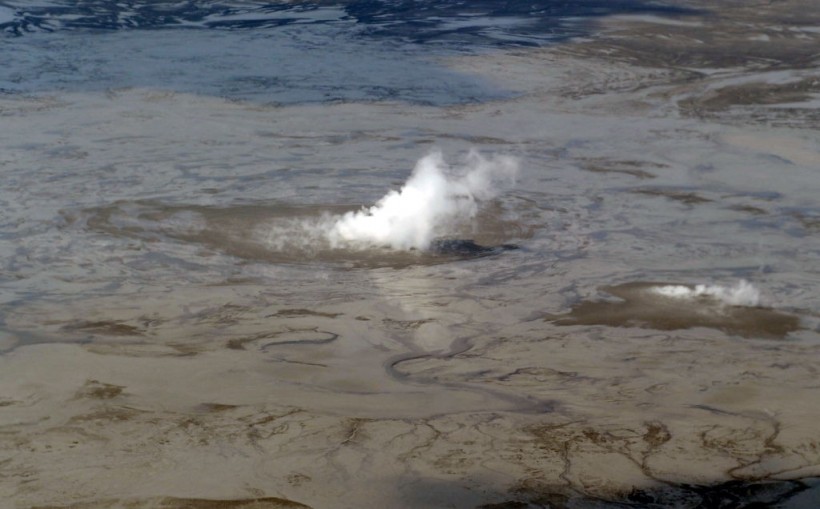A team of Arctic ocean explorers made an intriguing discovery of an underwater volcano emitting mud and methane from within a larger crater. According to Live Science's report, the formation likely resulted from a catastrophic event at the end of the previous ice age.
This unique feature was found approximately 80 miles (130 kilometers) south of Norway's Bear Island, also known as Bjørnøya, in the Barents Sea. Named the Borealis Mud Volcano, it is the second of its kind identified in Norwegian waters.

To go with focus story Indonesia-environment-mud-anniversary by Adek Berry This picture taken on May 26, 2010 shows an aerial view of the Lapindo mud volcano and the mud it has spewed in Porong, Sidoarjo district, on East Java.
Borealis Mud Volcano Found in Norway Gives Insights About Climate Change
Stefan Buenz, co-leader of the AKMA expedition, expressed his excitement about exploring the seabed and uncovering new methane seeps in a news release and likened it to discovering hidden treasures. He emphasized the vast diversity of these seep systems, highlighting that each expedition provides new insights.
Describing a submarine mud volcano, Buenz explained that it is a geological structure formed by the release of muddy fluid and predominantly methane gas.
The Borealis Mud Volcano, with a diameter of approximately 23 feet (7 meters) and a height of around 8 feet (2.5 meters), was observed emitting a continuous stream of muddy fluid rich in methane. As Live Science reported, this methane has implications for climate change when released into the atmosphere given that it is a potent greenhouse gas.
The mud volcano is situated within a larger crater that spans about 984 feet (300 meters) in width and 82 feet (25 meters) in depth. Located 1,312 feet (400 meters) beneath the sea surface, this extraordinary formation is believed to have formed as a result of a significant methane eruption that occurred around 18,000 years ago, during the last glacial period.
Giuliana Panieri, leader of the expedition and a professor in geology, reflected on the awe-inspiring nature of witnessing an underwater eruption in real-time, emphasizing the vitality and liveliness of our planet.
Underwater Volcano Teeming With Life
The Borealis Mud Volcano may be small, but it is a mighty one, as per IFL Science. The underwater volcano emits a mixture of water, gas, and sediments that originate several hundred meters beneath the seabed, providing insight into Earth's interior.
The unique ecosystem surrounding the volcano includes various sea creatures, such as sea anemones, sponges, starfish, corals, crustaceans, sea spiders, and a host of bacteria, feeding on carbonate crusts.
Only two mud volcanoes have been discovered in Norwegian waters: the Borealis Mud Volcano and the Håkon Mosby volcano. Despite being difficult to locate and map, researchers believe there could be hundreds or thousands of mud volcanoes on the seafloor globally.
Mud volcanoes provide a rare glimpse into geological processes deep below the Earth's crust and can provide insight into past conditions on Earth and potentially other planets. According to Panieri, studying these structures could unlock valuable knowledge and expand our understanding of geological systems.
RELATED ARTICLE: 3,200-Foot-Tall Underwater Volcano With Strange Bundt Cake-Like Shape Found off the Coast of California
Check out more news and information on Earth Science in Science Times.














